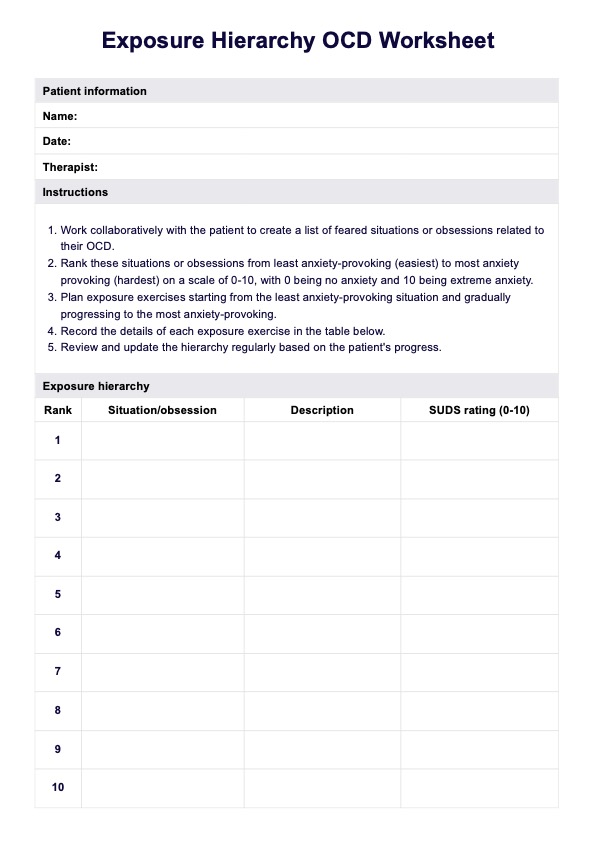The time to complete this worksheet varies depending on several factors, including your client’s ability to reflect and willingness. In some cases, it may take one to two sessions. For others, completing this tool may take only 30 minutes to one hour.

Exposure Hierarchy OCD Worksheet
Rank situations, objects, or behaviors that trigger your obsession and compulsion through our Exposure Hierarchy OCD Worksheet. Download the PDF now!
Exposure Hierarchy OCD Worksheet Template
Commonly asked questions
This tool offers a wide array of advantages helpful for both professionals and non-professionals. It helps identify specific situations, behaviors, or objects that provoke obsession and anxiety. It also assists in identifying which triggers illicit the least to the highest anxiety levels. Moreover, it encourages the client's active involvement, which is particularly helpful in building a positive therapeutic alliance.
It is best to use this worksheet in situations involving OCD, such as gaining insights about a client’s OCD, treatment planning, monitoring and tracking of treatment progress, and readjusting treatment plans.
EHR and practice management software
Get started for free
*No credit card required
Free
$0/usd
Unlimited clients
Telehealth
1GB of storage
Client portal text
Automated billing and online payments











